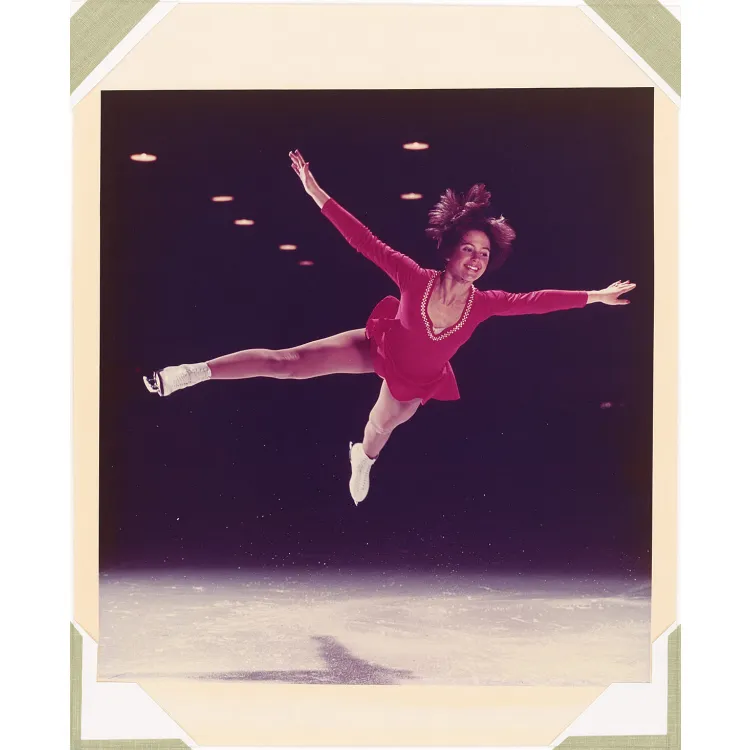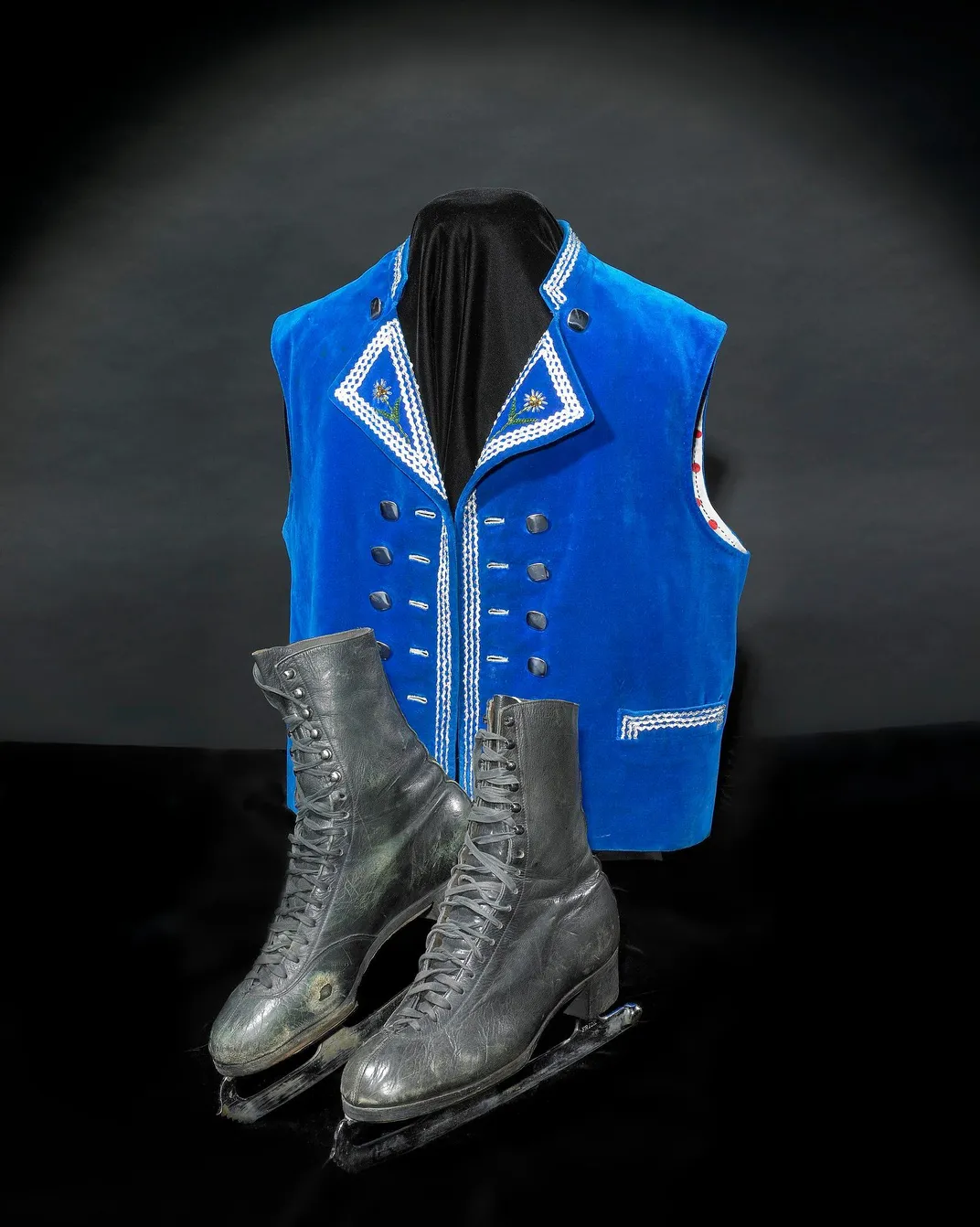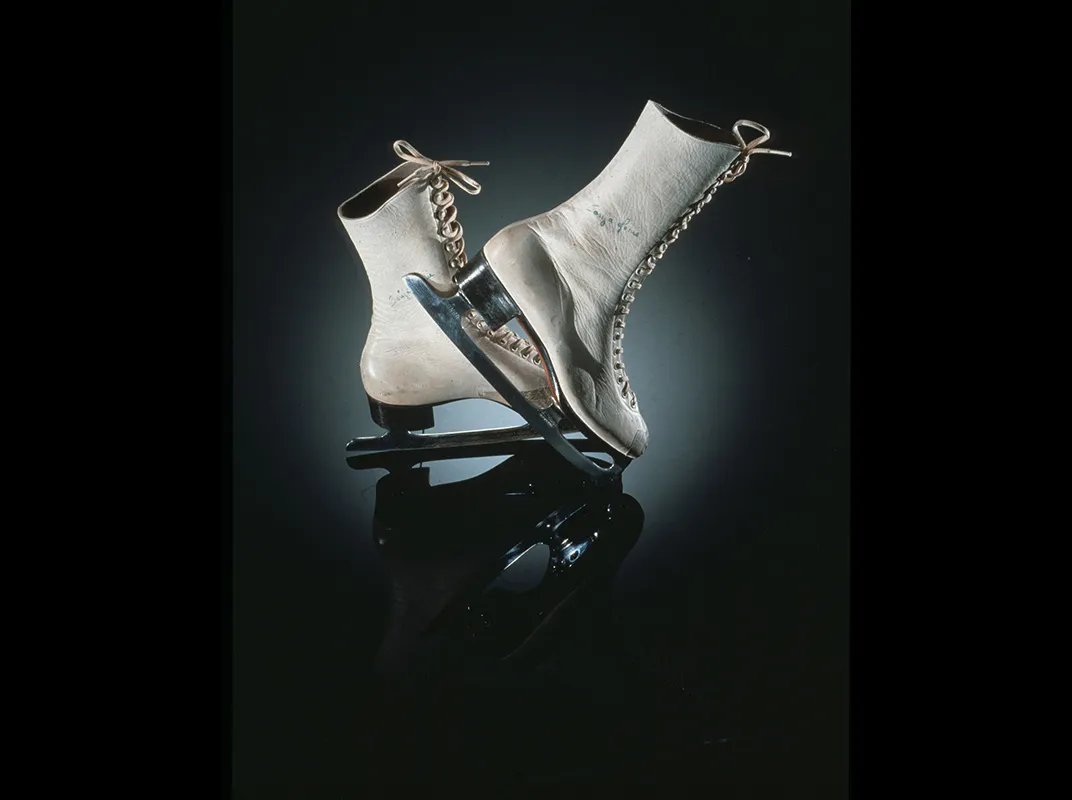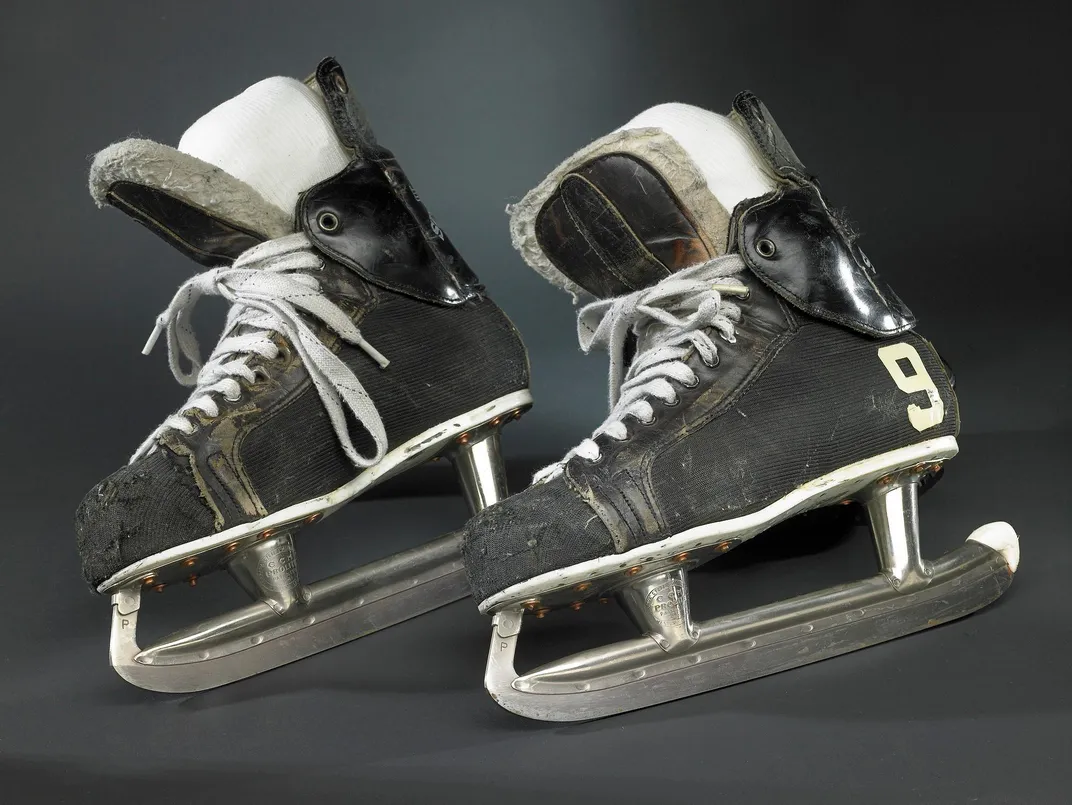The First Ice Skates Weren’t for Jumps and Twirls—They Were for Getting Around
Carved from animal shin bones, these early blades served as essential winter transport
/https://tf-cmsv2-smithsonianmag-media.s3.amazonaws.com/filer/17/7f/177f4777-7564-4547-aa1e-8d36da90baed/nmah-94-9418-wr.jpg)
Next month, ice dancers, racers and hockey players will lace up their razor-sharp skates to compete in some of the most popular winter Olympic games. But for centuries, blades on boots weren’t just for sports and leisure—they were the only way some people had to travel in winter. The ice skate dates back to the Bronze Age, when people throughout eastern Europe and Russia built skates out of animal shin bones that let them glide in vastly different ways than athletes do today.
In the 15th century Netherlands, the most common way to travel in cold months was by skates, says Federico Formenti, a physiologist and sports scientist at King’s College London who has studied the evolution of ice skates. Networks of canals that the Dutch built to power water mills and irrigate farmland in the summer became frozen highways for thousands to travel by in winter. (Locals and visitors still take to the ice, though idyllic winter days of snow and ice are less frequent today.)
“They were as popular there as cars are in America today,” Formenti says. “That was the stimulus to try new solutions to improve the skates, so people could travel more rapidly.”
Ice skates’ central role in the history of Dutch transportation might have something to do with the fact that the Dutch have more combined medals and gold medals in speed skating than any other country in the history of the Olympics.
No matter their design, all skates work by the same common principle: as the blade travels over ice, it melts a thin layer of water that allows the skater to glide. The speed and function of a skate, however, depends on the shape and size of the blade and boot. Blade thickness and boot sturdiness impact speed. And a long blade makes for a generally faster skate, Formenti says.
“Having a long blade means that your weight is distributed over a wider area,” he explains. “The blade does not sink as much into the ice so you can glide more easily because there is less friction.”
Since the 15th century, however, skates have gained new baubles, innovations and overall designs meant to improve more than speed. Figure skaters now sport toe picks to help them spin, while hockey players have double-edged blades for sharper stops. But all of today’s iterations stem from a common source dating back at least 3,000 years, when people first built skates out of animals bones to ease winter travel.
These skates were quite different than today’s skates. Whereas modern skates have narrow blades and travel only forward and backward, bone skates lie flat and can glide in all directions.
Formenti wanted to understand how the human energy required to ice skate has changed through time, so in 2006, he conducted an experiment in which he had five ex-professional short track speed skaters test out four different historical skates and one modern model. The skate styles he tested ranged from replicas of Bronze Age bone skates to modern steel skates. He sourced models from the 13th, 15th and 18th centuries to represent the gradual evolution through time, using a replica for the 13th century model and museum specimens for the two others.
His results showed the dramatic effect that the 13th century introduction of the metal blade had on skate dynamics. The metal blade—made from iron embedded in wood—nearly doubled the speed of skates, from about 2.5 miles per hour to 4 miles per hour. The introduction of sturdier bindings in the 15th century helped increase the speed again, to about 6 miles per hour.
Today, skaters can reach speeds four times faster than on the original bone skates, with a world record of 36.80 miles per hour set by the Russian Pavel Kulizhinkov in the 2015 World Cup.
Why did metal make such a difference? “The metal blade allows control of the skate, and then you increase that control by having the skate tightly bound to your feet,” says Formenti. He explains that increased control allows for longer strides: “Your feet need to be stable on the blade rather than wobbling around, which was the case with older skates.”
But some skate innovations have gone so far as to no longer benefit the skater. Modern bindings on skates allow for more stability, more forceful strides and theoretically fewer ankle twists. But James Richards, a sports biomechanics researcher at the University of Delaware, says that the stiffness of the modern figure skating boot restrains movement so much so that it can actually cause injury when a skater lands from a jump.
“There is stability in all directions and that’s probably not the right way to go,” Richards says. “In essence, what they have done is built a cast.”
Ankle sprains and overuse injuries like stress fractures and lower back pain are common amongst figure skaters as a result of the boot’s restrictiveness, Richards says. He cites a 2003 study that showed that nearly half of a group of 469 elite junior skaters experienced overuse injuries in competition.
Hockey and speed skates, on the other hand, have evolved more rapidly in recent years. Hockey skates have gained mobility in the ankle, and speed skating clap skates with hinged boots allow racers to keep their blades on the ice for longer periods of time and reach higher accelerations. “Hockey skates and speed skates are much more sophisticated than the current figure skate,” Richards says. The market for hockey skates is bigger than that of figure skates, he explains, and these sports aren’t as entrenched in tradition as figure skating.
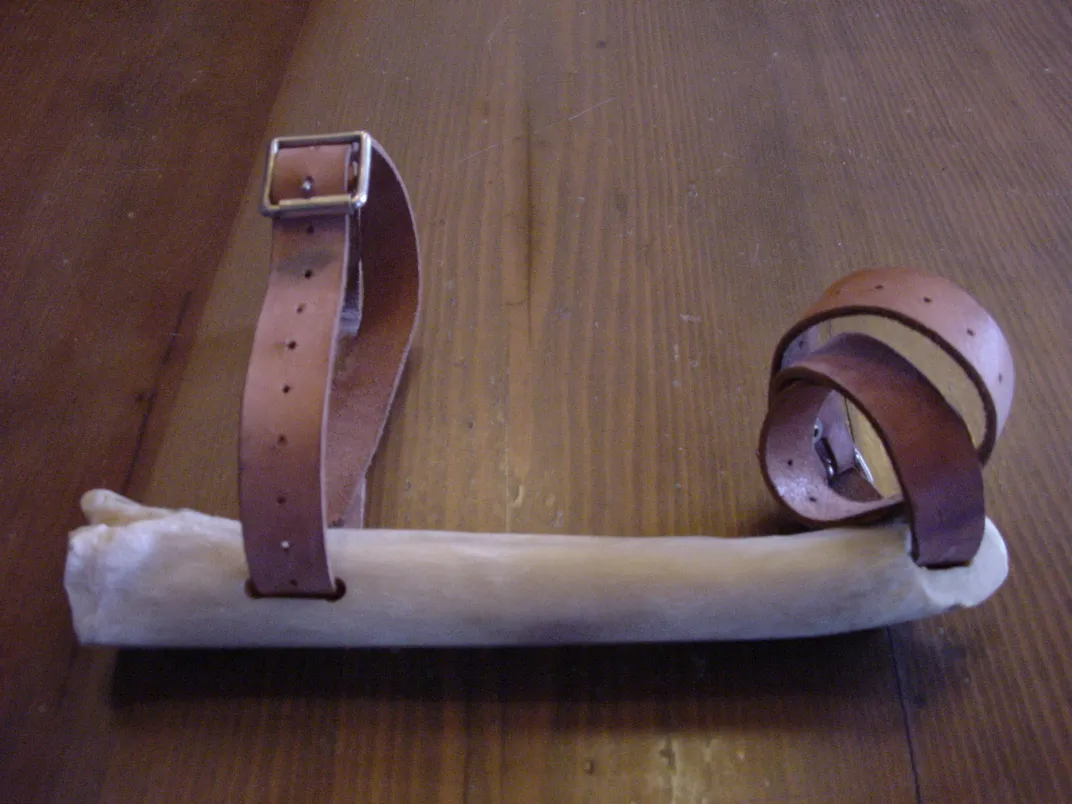
Even given these innovations, it’s humbling to remember that our ancestors have been hustling around on ice for at least 3,000 years. Bone skates—generally made from the shin bones of cattle and horses—have been found throughout particularly flat and wet regions of Hungary, Scandinavia, Germany and elsewhere. They were cheap and easy to make, and would have been accessible to the average person, says Hans Christian Küchelmann, a bioarchaeologist at the University of Groningen in the Netherlands.
“Making bone skates is not an elaborate task,” says Küchelmann. He should know: He once made a pair himself in an effort to understand the Bronze Age experience. First he had to source the bone, by contacting the director of the Sofia Zoo in Bulgaria, who offered him horse remains from the lions’ den. He then defleshed and cleaned these bones, used a modern drill to make holes in the front and back, and attached leather straps that secured the bones to his boots.
Finally, he gave them a try. His verdict: “It was quite interesting and challenging."
Whereas modern skates with blades travel only forward and backward, bone skates lie flat and can glide in all directions. “In the modern day skates, you have this blade and you make a kind of scissor-like movement and you push yourself, you propel yourself by pushing your leg to the side,” says Küchelmann. “But you can’t do that with the bone skates.”
It’s hard to know whether people in the Bronze Age used these early skates for anything more than just travel, since written records don’t exist from that time. But records and paintings from the 14th and 15th centuries showing adults and kids scurrying on the ice suggest that leisure has long been at least one component of skating.
Today, when the ice forms thick enough to skate on in the Netherlands, it’s cause for celebration. “Immediately you have the whole city on the ice,” Küchelmann says. “You could meet the mayor on ice skates, families, older people, punk rockers, whatever. People sell hot wine and sausages on the ice. It’s like a fair.”
Yet while ice skating culture lives on, the design evolution of at least some skates may be at a standstill. For his part, Richards doesn’t think the figure skate will change much any time soon, since so little has changed in its design over the last century. “A lot of why [the skaters] are in what they are in is tradition,” says Richards. “There is very little incentive to go out there and put major resources into a major reengineer of the skate.”
